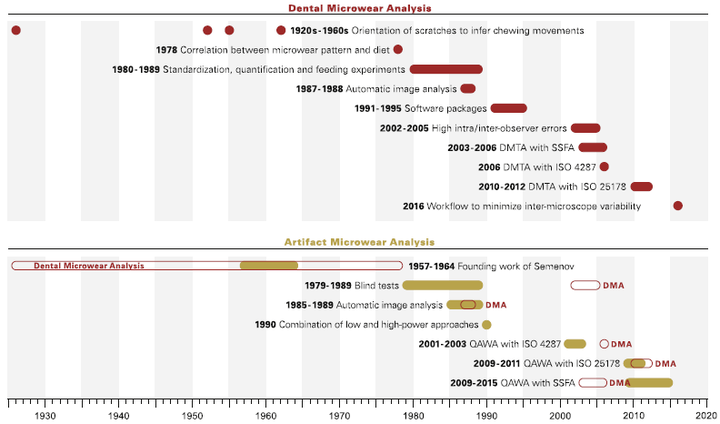Why should traceology learn from dental microwear, and vice-versa?

Abstract
Dental and artifact microwear analyses have a lot in common regarding the questions they address, their de- velopmental history and their issues. However, few paleontologists and archeologists are aware of this, and even those who are, do not take into account most of the methodological insights from the other field. In this focus article, we briefly review the main developmental steps of both methods, highlight how similar their histories are and how combining methodological developments can improve both research fields. In both cases, the traditional analyses have been strongly criticized mainly because of their subjectivity and their lack of repeatability and reproducibility. Quantitative surface texture analyses have been proposed in response, re- sulting in dental microwear texture analysis (DMTA) and quantitative artifact microwear analysis (QAMA). DMTA is however a more mature method than QAMA and is well supported within the paleontological community. In this paper, focused on the methodological framework of both fields, we address this topic by arguing that traceologists could borrow a lot from DMTA; this would allow QAMA to become an established method much more quickly. Dental microwear analysts can also learn from traceology, especially regarding sample prepara- tion, experimentation and residue analysis. We hope that this focus article will stimulate more awareness, exchange and collaboration between pa- leontologists and archeologists, and especially between dental and artifact microwear analysts. Paleontology, archeology and the field of surface analysis as a whole would all benefit from such cooperation.